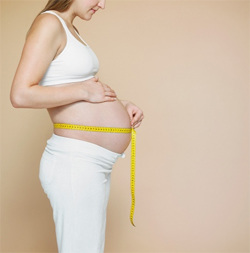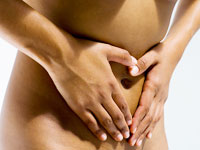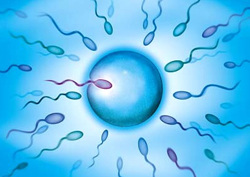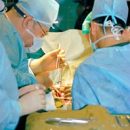The complex nature of endometriosis, its treatment and the flow gave rise to many misconceptions and myths about this disease. We will try to dispel some of them and clarify the situation with this not an easy female ailment.
Content
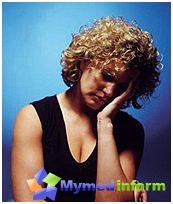 Myth number 1. Periodic pains in women – this is normal
Myth number 1. Periodic pains in women – this is normal
This myth was distributed since the XIX century. Doctors then explained the menstrual pain instability and delicacy of women's physiology. In the XX century, despite the achievements in science and medicine, in particular, the old delusions continue to be maintained.
As a result, many women trying to find an explanation and reason for pain, receive answers that pain during menstruation – This is a norm, which is very characteristic of a female body. Other «cause» Pares in women during menstruation – This, according to some doctors, low pain threshold.
Many women and girls experience pain during menstruation. However, pronounced pain during menstruation, which violate the usual lifestyle and the level of activity, cannot be the norm, and usually they are based on some disease, for example, endometriosis. Therefore, every woman and a girl with severe pains during menstruation should be fully examined to identify their causes.
Myth number 2. Young women do not suffer from endometriosis
Currently, there are still many doctors believe that endometriosis is sick of mature age, and young women cannot suffer from this disease. Therefore, when you come to young patients with such complaints as pain during menstruation and sexual intercourse, doctors do not even think about endometriosis.
Unfortunately, this myth is distributed since a long time. Until the 70s, when laparoscopy was invented, the diagnosis of endometriosis could be set only on the basis of the data of the laparotomy operation, that is, the autopsy of the abdominal cavity with a cut on the abdominal wall of up to 15 cm.
Due to the possible risk of complications and value of this operation, this operation was usually carried out in giving birth women with severe pains, as the last chance. And since only women of mature age fell on the operation, that is, 30–40 years old, endometriosis was diagnosed only at this age category. Therefore, doctors have an idea that endometriosis – This is a disease of women 30-40 years.
In 70–The 80s was invented laparoscopy – The relatively safe and cheapest method that entered the doctor to see the change in tissues and organs in the patient's abdominal cavity. Gynecologists began to examine this method of women with infertility, as a result of which endometriosis began to be detected from younger women.
Data that endometriosis may suffer both young women and adolescents, obtained as a result of an international study conducted by the United States, Great Britain and Australia in the 1980s. Researchers conducted a survey of women about when they first encountered pains during menstruation, and when they were diagnosed with endometriosis for the first time. The study showed that almost 60% of women endometriosis was diagnosed in 25–35 years, and in 43% - in adolescence.
Fortunately, in the 90s, the results of this study were in the attention of some prominent gynecologists. Mark Lowofe (Pediatric Center of Boston) conducted his study the causes of chronic pain in the lower abdomen in adolescents, which did not take place when applying oral contraceptives and non-steroidal anti-inflammatory funds. 70% of such adolescents showed endometriosis.
Such studies were conducted in England and the United States. The results of these studies have shown that the average age of women who experienced such pains was 22 years old, and the age category itself ranged from 10 to 46 years. From this we can conclude that endometriosis can be hurting both young women and teenagers.
Myth number 3. Hormonal preparations are able to cure endometriosis
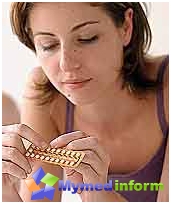 For many years, synthetic hormonal drugs, such as provisions, Danazole and Zoladex, are used to treat endometriosis. However, recent studies have shown that these drugs do not have a long-term effect. These hormones simply suppress the manifestations of endometriosis, but only at that time until the patient takes them. As soon as the receptions stop, the symptoms of the disease appear again.
For many years, synthetic hormonal drugs, such as provisions, Danazole and Zoladex, are used to treat endometriosis. However, recent studies have shown that these drugs do not have a long-term effect. These hormones simply suppress the manifestations of endometriosis, but only at that time until the patient takes them. As soon as the receptions stop, the symptoms of the disease appear again.
This means that hormonal treatment does not play an important role in the cure of endometriosis. If a woman wants to completely get rid of endometriosis, you should resort to surgical intervention.
In addition, it means that hormonal treatment should not be used to improve the fecundity and increase the chance of conception of the child. Not only do they affect the outcome of the disease, they also reduce time to conceive, since this process is impossible when applying hormones.
Myth number 4. Pregnancy is capable of healing endometriosis
Fortunately, the myth that pregnancy is able to cure endometriosis, gradually dissipates. However, you can still meet such statements. In reality, pregnancy, like drug treatment, usually suppresses the manifestation of endometriosis, but does not heal from it. After the birth of the child, the symptoms of endometriosis are returned again.
Breastfeeding is able to delay the re-manifestation of endometriosis, as the prolactin hormone, which is responsible for the production of breast milk, acts on the body of a woman as a contraceptive.
Myth number 5. Endometriosis is certainly accompanied by infertility
Many young women believe that endometriosis is necessarily accompanied by infertility. Sometimes even doctors speak such patients that they should get married as soon as possible and give birth to a child, otherwise it will be too late.
Unfortunately, we have no reliable statistical data on what percentage of women with endometriosis is experiencing problems with the onset of pregnancy, which percentage does not have such problems at all, and what percentage - albeit with difficulty, but still they were able to conceive a child. Therefore, we cannot give women suffering from endometriosis, the answer, what are their chance to conceive.
It is assumed that the probability of infertility is higher than the pronounced manifestation of endometriosis. And yet many women suffering from endometriosis can have children. Gynecologists argue that 60–70% of such women are fully capable of conception.
Myth number 6. Infertility in endometriosis is usually caused by the defeat of the uterine pipe
In popular literature, the assertion is increasing more and more often, that the formation of scars on the surface of the uterine pipes as a result of endometriosis is a typical cause of infertility. The authors of such articles – People who are not understanding and not knowledgeable in the problem of infertility and endometriosis.
They confuse the causes of infertility associated with endometriosis, and infertility associated with inflammatory diseases of the pelvic organs. Inflammatory processes in the pelvis cavity destroy or block the uterine pipes. As a result, the egg cell, released from the burst of the follicle of the ovary, cannot move in the uterine tube in the direction of the uterus, and the spermatozoa - in the side of the egg.
In fact, the foci of endometrium tissue is rare on the surface of the uterine pipes. That is why endometriosis is extremely rarely the cause of the formation of scars in the field of uterine pipes and infertility caused by this. The mechanism that is responsible for the development of infertility during endometriosis is still not yet found out to the end, although it is already being studied for several decades.



